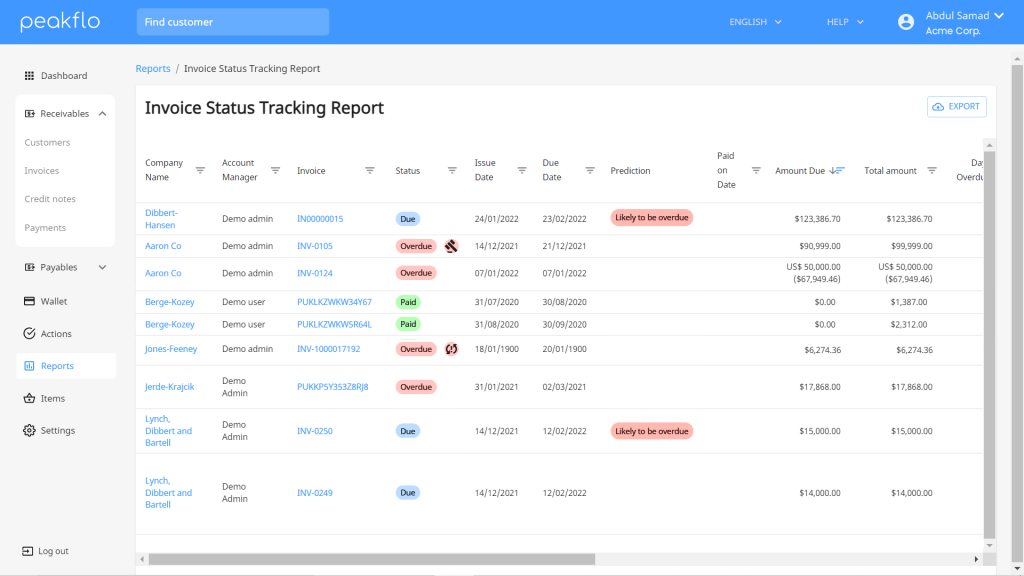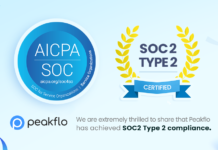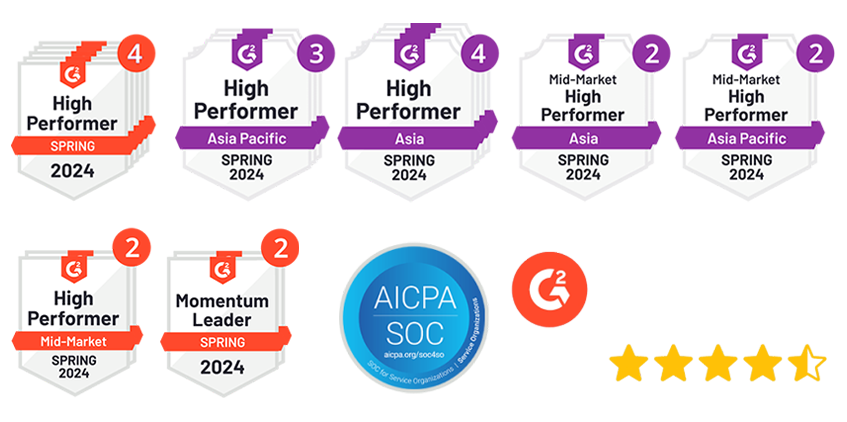As a business owner, filing receipts of your expenses and financial records is crucial for effective financial management. If not, you will face some potential consequences such as legal and tax compliance issues, audit risks, and also inaccurate financial records.
In this article, we’ll explore why filing receipts is important, and let’s learn how to organize business receipts with a few simple practical solutions.
Why Filing Receipts is Important for Business?
Filing receipts is the process of storing proof of payments, settlements, incomes, and expenses of a business. Record-keeping is a critical part of financial management, here’s why.
1. Expense Management
Filing receipts can help businesses with expense tracking and ensure that they are managing their costs effectively for their business needs.
By having an organized system for financial bookkeeping, businesses can quickly and easily access information about their spending, which can be useful for identifying areas where they can cut or optimize costs to support their operations.
2. Accounting and Budgeting Plan
Business receipts provide a clear record of business expenses and incomes that can be used in financial statements and other accounting records.
This can help businesses track their spending and make informed financial decisions. Indeed, businesses can create a more accurate budgeting plan for the future and monitor their financial performance against that plan.
3. Accurate Financial Records
Keeping accurate records is crucial for effective financial management.
This way, you can monitor your cash flow and learn about the overview of your financial situation–whether it is healthy or not and what further business strategies you should adopt to improve, maintain, or increase your financial position.
4. Legal and Tax Compliance
The Internal Revenue Service (IRS) requires taxpayers (which includes small businesses) to keep records of their income and expenses for at least three years from the date of filing their tax returns or 2 years from the date they paid the tax.
Yes, proper financial record-keeping is necessary for tax compliance and can help businesses to avoid audit risks, penalties, and fines.
If you’re audited by the IRS and can’t provide accurate records of your expenses, you could face penalties or even criminal charges.
On the other hand, poor filing of receipts can have serious consequences. It can lead to inaccurate financial statements, missed tax deductions, additional taxes, and even legal problems that you don’t want.
Note to business owners, not all receipts need to be stored. The receipts should be kept as follows: income taxes, fixed assets, inventory, and other tax-deductible expenses.
Filing Receipts Methods
Here are the best document retention methods for paper receipts and digital receipts.
1. Physical Filing Systems
There are two methods of physical filing systems: traditional filing methods and filing by category.
A. Traditional Filing Methods
One of the most common ways to file receipts physically is to use traditional filing methods, such as alphabetical and numerical.
Alphabetical filing involves arranging receipts in order according to the first letter of the name or word.
For example, receipts for purchases from “Amazon” would be filed under “A” section, while those products from “Best Buy” would be filed under the “B” file.
Numerical filing, on the other hand, involves assigning a number to each receipt and arranging them in ascending or descending order.
As a result, it’ll be easier to organize and find their receipts by just sorting from the number or alphabet.
B. Filing by Category
Another physical filing method is filing by category. This involves grouping receipts together based on their category and type of products or services.
For example, all receipts related to office supplies would be filed together, while those related to travel expenses would be filed separately.
This method can be more effective than traditional filing methods for businesses that generate a large number of receipts of various products or services–as it allows for easier retrieval of specific receipts based on their category.
2. Digital Filing Systems
As more businesses and individuals transition towards a paperless environment, digital filing systems have become increasingly popular for storing and organizing receipts.
There are several methods for digitally filing receipts, including:
A. Scanning and Saving Receipts
One of the simplest digital filing methods involves scanning paper receipts and saving them to a digital format, such as a PDF file.
This method allows for easy organization and retrieval of receipts, as they can be saved to a computer or other digital storage device.
B. Cloud-Based Filing Systems
Cloud-based filing systems offer a more sophisticated solution for digital receipt filing. These systems allow users to upload, store, and organize receipts on a remote server–which can be accessed from anywhere with an internet connection.
Cloud-based systems also offer additional features such as the ability to tag receipts, search for receipts by date or amount, and generate reports.
Overall, digital filing systems offer several advantages over physical filing systems, including increased accessibility, organization, and security.
With the advent of cloud-based solutions, it has become easier than ever to store and manage receipts in a digital format.
Best Practices for Filing Receipts Organization
Filing receipts can indeed become overwhelming if you wait too long to organize them. To avoid this, it’s important to develop a routine for handling receipts.
Here are some tips to stay on top of receipt organization.
1. Creating An Effective Receipt Tracking System
Here are two methods for tracking receipts you can implement on regular basis.
Manual Receipt Tracking
Spreadsheet programs, such as Microsoft Excel or Google Sheets, that will help you in receipt tracking and management. Here’s a simple guide.
- Create a spreadsheet with columns for the date, vendor, category, amount, receipts proof, and any notes or comments.
- Enter each receipt into the spreadsheet as it is received.
- Sort and filter the data to view the information in different ways.
- You can use advanced formulas to calculate.
- This can help with budgeting, expense tracking, and tax preparation.
With Peakflo, you can eliminate the use of spreadsheets that can be frustrating to manage. Peakflo will automate data tracking, providing you real-time invoice and customer status tracking reports as well as an advanced budget management system.

Automatic Receipt Tracking
Another option for tracking receipts is to use accounting software. Many of this receipt management software offer receipt tracking features that allow users to take photos of receipts and automatically extract data such as the date, vendor, amount, and details.
The software can then organize and store the receipts in a searchable database, making it easy to track expenses and generate reports.
By implementing a receipt tracking system, you can streamline the process of managing and organizing receipts, making it easier to stay on top of your finances and prepare for the tax season.
By integrating Peakflo into your accounting software, enable 2-way sync for all your receipts. No need to worry about any mismatch as we ensure accuracy with the data so you can cut down the time on month-end reconciliation by 50%.

2. Storing and Labeling Receipts
Once you have created a system for tracking receipts, it’s important to store and label them properly for easy retrieval.
A. Labeling Physical Receipts
When storing physical receipts, it’s important to label them clearly with relevant information, such as the date, vendor, and purpose of the expense.
You can use a pen to write this information directly on the receipt or attach a sticky note or label to the receipt with this information.
Organize the receipts in folders or envelopes based on categories, such as income taxes, fixed assets, or office supplies. This will make it easier to locate specific receipts when needed.
B. Organizing Digital Receipts with Naming Conventions
If you are using a digital filing system, it’s important to develop a consistent naming convention and format for your files. This will make it easier to search for and find specific receipts.
For example, you can use a naming convention that includes the date, vendor, and category of the expense.
This might look something like “Date_VendorName_Categories.pdf”. Be sure to consistently apply this naming convention to all digital receipts.
Now you can retrieve specific receipts when you need them, as well as analyze and track your expenses and incomes effectively.
3. Regular Maintenance and Review
Business document management becomes more enjoyable if you set regular bookkeeping and review schedules.
A. Setting Up a Schedule
Schedule regular maintenance and review sessions for your receipts, whether they are physical or paperless receipt organizations.
This can be a weekly, monthly, quarterly, or yearly review–depending on the volume of receipts you receive.
During this time, you can file any unfiled receipts, review your tracking system for accuracy and completeness, and identify any missing receipts.
B. Regular Review for Accuracy and Completeness
Regularly reviewing your receipts for accuracy and completeness is also essential. Check that each receipt has been properly labeled and filed and that the information in your tracking system matches the information on the receipt.
If you notice any discrepancies or missing receipts, take steps to correct the issue, find a solution, and update your tracking system accordingly.
By conducting regular maintenance and review of your receipts, you can make sure that your tracking system remains accurate and up-to-date. You can take the data to identify your financial health and decide on a future financial plan.
Many small businesses ignore the importance of financial record-keeping and think document retention is a complicated job.
In fact, implementing bookkeeping best practices only takes a few minutes to save your business from inaccurate financial reports or legal and tax compliance issues in the future.
For finance teams, having an integrated record-keeping system can help improve productivity as you have access to real-time and accurate data. This in turn can improve your business performance significantly.
Peakflo can be your source of truth to store all your financial data. By integrating your accounting software, harness the power of 2-way sync and save 100 man-hours per month on tedious finance tasks.
Check our product in the product tour to know how Peakflo helps your business run efficiently and effectively.













































